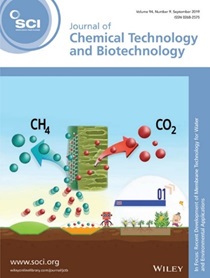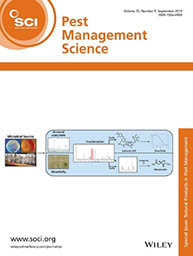SCI's peer-reviewed journals provide research studies and commentary articles undertaken by top scientists in emerging areas, addressing global audiences by crossing academic, industrial, government and science policy sectors.
Here are some of the highlights from the most recent issues of our journals. To view the full range of SCI's journals, visit our Publications page!
Removing pollutants from automobile exhausts
Journal of Chemical Technology and Biotechnology DOI: 10.1002/jctb.6103
Automobile exhaust is a major source of air pollution, especially in larger cities, with much time and resources being applied to reducing these emissions and their impact on the environment.
Based on this new study, a novel chemical looping combustion process is proposed for simultaneous removal of nitrogen oxides (NOx), carbon monoxide (CO) and hydrocarbons (HC) from automobile exhaust, which showed better removal rates of these pollutants.
Recent development in membrane technology for water and environmental applications

The cover image is based on the Research Article Composite membranes of graphene oxide for CO2/CH4 separation by Nadia Norahim et al., DOI: 10.1002/jctb.5999.
This special collection in the Journal of Chemical Technology and Biotechnology (JCTB) gathered membrane scientists with specific research expertise to share their latest scientific findings and solutions for practical problems faced by industry.
The major topics of the contributions are synthesis of new nanocomposite membranes incorporated with advanced nanomaterials for both water and gas separation processes; fabrication of membranes using new materials for enhanced chlorine and solvent resistance; as well as development of a mathematical model to characterize the physical aging mechanism of polymeric membrane during oxygen enriched combustion process.
Journal of Chemical Technology and Biotechnology Issue Link: 10974660/2019/94/9
Hydrogels as wound dressings

Polymer International DOI: 10.1002/pi.5770
In promoting fast and efficient wound healing, it’s important to remove dead, damaged, or infected tissue (a process known as debridement) to improve the healing potential of the remaining healthy tissue.
Hydrogel wound dressings consist of 90 percent water in a gel base and are typically used for promoting autolytic debridement (the breakdown of damaged tissue surrounding a wound site using the body's own enzymes and moisture). This is a slow process and isn’t hugely clinically effective.
Enzymatic debridement is a selective method of wound debridement that uses manufactured naturally occurring enzymes. Enzymatic products used in this process are either ointments or gels and they are easily washed out when used for treating highly exuding wounds.
This research article in Polymer International explored a novel wound dressing that combined enzymatic debridement functionality with a hydrogel dressing. The authors concluded that this new combination had the potential to be used as new dressing materials, which could result in promoting faster wound healing in exuding wounds.
In focus: Poly ionic liquids
Poly ionic liquids, (also termed polymerized ionic liquids or PILs) are ion‐containing polymers where an ionic liquid (IL)‐containing monomer is polymerized. PILs combine many of the attractive properties of ILs (tunable conductivity, low flammability and negligible vapor pressure) with the mechanical stability and processability of various polymeric architectures.
The growing field of PILs and their applications are covered in an In Focus section in Polymer International.
Natural products in pest management
Growing concerns over the presence of xenobiotic chemical residues in the food chain, the evolution of pesticide‐resistant pests, and the loss of registration or phasing out of some of the more effective pesticides, have generated a renewed interest in the development of alternatives to synthetic pesticides.
This special issue of Pest Management Science brings together a number of interesting papers on the topic.
Natural products are valuable natural resources from the vast biodiversity of plants and microbes, and we have only begun to investigate, discover, and determine what natural compounds and combinations of natural compounds can be used for pest management. Such “soft” or “green” chemistry products are needed tools in not only agriculture (conventional and low input farming systems for integrated crop production, or organic agriculture), but also for managing pests of environmental and public health importance.
Pest Management Science Issue Link: 15264998/2019/75/9
Related links:


